
 The South African
The South African
Military History Society
Die Suid-Afrikaanse Krygshistoriese Vereniging
Military History Journal
Vol 11 No 1 - June 1998
THE PRINCESS CHRISTIAN HOSPITAL AT PINETOWN BRIDGE
by Steve A Watt
The Princess Christian Hospital, originally containing 100 beds, was generously provided, equipped and maintained
by Mr Alfred Mosely during the South African War (1899-1902). Her Majesty's transport ship, the Assaye,
sailed from Southampton with the hospital, Maj H B Mathias in charge of four surgeons, two dressers, six
nursing sisters and thirty members of the St John Ambulance.(1)
After arriving at Cape Town, orders were received for the Assaye to proceed to Durban, where it arrived on
26 March 1900. Maj Mathias set to work at once and, on 28 March, inspected a proposed site for the hospital at
Pinetown Bridge, very kindly offered by a Mr Frank Stevens.(2) The site proved satisfactory in every respect;
the Natal Mercury described it as '... unequalled in South Africa' and 'one of the most beautiful and salubrious on
the railway line'.(3) Mr D Hunter, the general manager of the Natal Government Railway, was anxious to assist. In
the meantime, the hospital building equipment, of a mass of 275-320 tonnes, was being disembarked.(4)
Shortly after its arrival, the Natal Government decided to equip the hospital with an additional 100 beds,
bringing the total to 200 beds. The hospital consisted of Mr Mosely's four 'pavilions'- an operating theatre,
an x-ray room, a dark room and dispensary, and five government wards.(5) There were already buildings on the
property, which would provide quarters for the medical and nursing staff, offices and kitchens, and an officers'
ward of twelve beds. The orderlies' camp was situated 200 metres from the hospital. Each pavilion was built of
corrugated iron, the walls being lined with green canvas attached to the structural woodwork, and the ceiling
covered with whitewashed canvas which was nailed to the rafters.(6) Each pavilion, 39,4 metres in length, comprised
two wards, each of which accommodated 12 to 16 beds. The wards were separated by a hall and sisters' rooms,
while at each corner in turn there was a linen room, a toilet, a pantry and a bathroom.(7) Each government ward
contained 16 to 18 beds and was built of corrugated iron, the interior of which was lined with wooden slats.
On 16 April the first patients, injured in a railway accident, arrived at the hospital. Twelve days later the
first sick and wounded were admitted in the government wards. The patients were received from the Princess
Christian Hospital Train(8) at Pinetown Bridge Station and were conveyed to the hospital on wheeled stretchers.(9)
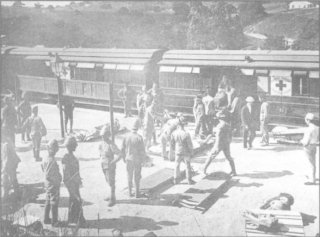
Patients being carried out of the
Princess Christian Train at Pinetown Bridge
Princess Christian(10) gave her permission to have the hospital named after her and, on her birthday on 25 May,
it was formally opened by Colonel Morris, the commandant of Durban. It was blessed by the Bishop of
Natal, the Rev Dr Baynes. Amid laughter and applause, praise was given to Mr Mosely, who had provided the
hospital at his own expense; Mr Stevens, the owner of the site, for the erection of the hospital; and Mr Hunter,
the general manager of the Natal Government Railways, for his assistance. Five hundred distinguished guests,
invited by Mr Mosely, attended the function, two special trains conveying them from Durban and back again.(11)
After the completion of the formalities of the opening, those assembled partook in light refreshments served in
the shade in the front of the hospital. Before the gathering dissolved, Mr Mosely planted an essenwood
tree in front of the building.
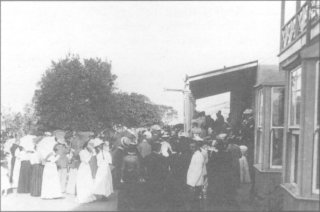
The opening ceremony at the hospital on 25 May 1900
(Photo: Museum Services)
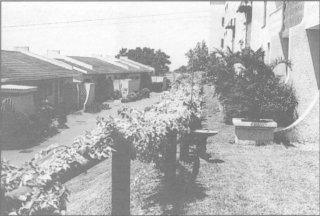
The same view today, the site of the
hospital having been landscaped to contain
the individual dwellings of the Fairydene Village
On 20 July 1900, three months after its establishment, the hospital was handed over to the Natal Government
and Mr Mosely departed on the following day.(l2) Until then, 327 patients had been admitted to the Princess
Christian Hospital. Of these, nineteen had died(13), most as a result of disease contracted during the Natal
campaign, most notably enteric fever, dysentery, 'simple continued fever', rheumatism, debility, and jaundice.
There were also a few cases of malaria and 'Natal sores' (a term used to describe tick bites).(14)
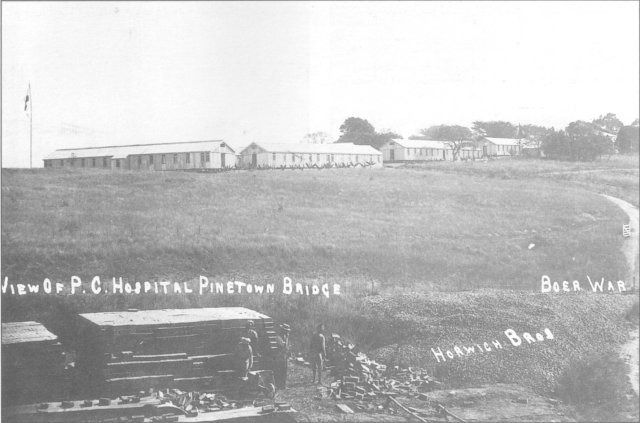
View of the Princess Christian Hospital with
the Natal Government Railway in the foreground
During the whole period of its existence (16 April 1900 to July 1902)(15), firstly as the Princess Christian Hospital
and later as the No 13 Stationary Hospital(16), about 5 000 patients were admitted. Soldiers who died at the hospital
were buried in the St John's Churchyard, where the graves were carefully tended by the Guild of Loyal
Women. Eventually, the original wooden crosses rotted and metal ones, erected later, rusted and had to be
replaced. A large monument, bearing the names of 39 men and one Boer prisoner of war was erected in 1922.(17)
A further nine soldiers were buried in the grounds of the nearby Roman Catholic Monastery, Mariannhill.(18)
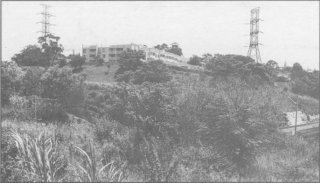
Fairydene Village today. Under the railway bridge
passes the N3 Highway from Durban to Pietermaritzburg.
One of those buried in the St John Churchyard was Surgeon Lt Col Walter Waring, aged 41 years. Serving
with the Medical Militia Staff Corps, he died of dysentery at the Princess Christian Hospital on 6 October 1900.
Having volunteered for active service, Waring had arrived in South Africa in February 1900 and had served
during the war up to the time of his death. He was the highest ranking medical officer on the imperial side to die
in the South African War.
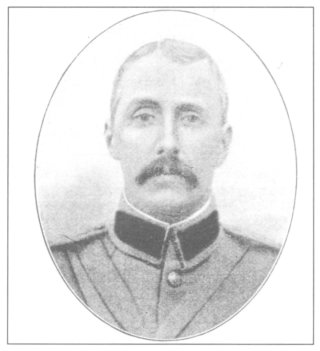
Lt Col Walter Waring (Photo: Natal Society Library
The success of the Princess Christian Hospital can be ascribed to several factors. Mr Stevens, the owner of the
land, charged no rent and provided free fuel and water, while one of the doctors commented:(19)
'I cannot speak too highly of the railway arrangements, and the way in which Mr David Hunter, the General
Manager [of the Railwaysj, did everything in his power to help us. The residents of the neighbourhood were very
good in sending gifts of fruit, and Mr Stevens, the owner of the Pinetown Bridge Estate, did all he could to further
the success of the hospital.'
The current situation
The Princess Christian Hospital once occupied the site of what is today the Fairydene Village. The Village, a
retirement complex for senior citizens, is situated near the intersection of Stapleton and Underwood roads in Pinetown.
The only vestige of the original hospital which can still be seen today is the dining hall, which served as the
officers' ward.
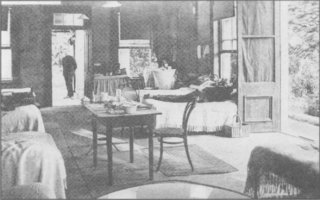
The officers' ward at the Princess Christian Hospital
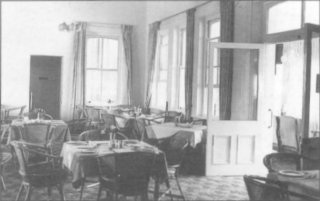
The room today - a dining hall of the Fairydene Village
The railway line is on the trackbed of the old Natal Government Railway. A short distance away is Sarnia
Station, the site where the Princess Christian Hospital Train halted. The wounded and sick patients were taken
up the hill to the hospital along a route suitably named Christian Road.
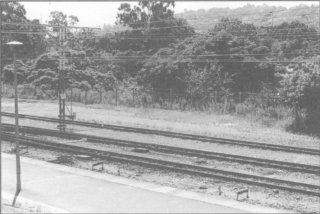
Sarnia Station today
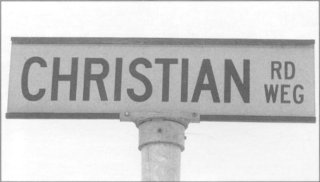
From the station, Christian Road
provides a link to Fairydene Village
The dead are buried in two localities. There are 44 graves of imperial servicemen in the St John's Churchyard
in Pinetown. A large memorial and several headstones identify the military precinct. A cemetery in the
grounds of the Mariannhill Mission Estate contains a small military section in which a further nine soldiers are
interred.
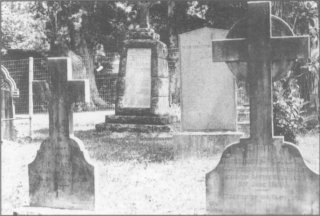
Graves and memorial in St John's CHurchyard, Pinetown
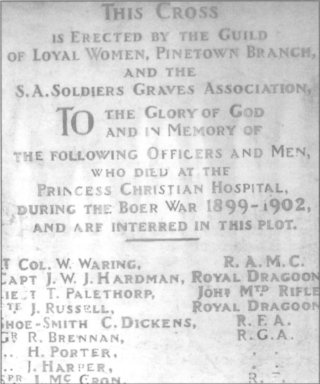
Close-up of names appearing on the memorial
in the St John's Churchyard, Pinetown
References
- G Worthington, 'The Princess Christian Hospital' in the Medical Journal, 20 April 1901;
'The Princess Christian Hospital', a document in the Pinetown Museum.
- Worthington, 'The Princess Christian Hospital'.
- The Natal Mercury, 26 May 1900; the Daily News, 26 May 1900.
- Worthington, 'The Princess Christian Hospital'.
- Worthington, 'The Princess Christian Hospital'.
- Worthington, 'The Princess Christian Hospital'.
- Singleton, J, The Battlefields of Natal Revisited (Durban, 1900).
- In order to provide for the conveyance of the sick and wounded to the various hospitals in Natal,
the Natal Government Railway convened its coaches into two complete hospital trains. In addition,
a third was converted into the 'Princess Christian Train'.
- The Daily News, 26 May 1900.
- Annals of Pinetown (Sarnia, 1977), Pinetown Women's Institute. On her marriage, Helena,
fifth child of Queen Victoria, became Princess Christian of Schleswig-Holstein of Denmark.
- Worthington, 'The Princess Christian Hospital'; the Natal Mercury, 26 May 1900; the Daily News, 26 May 1900.
- Worthington, 'The Princess Christian Hospital'.
- Worthington, 'The Princess Christian Hospital'.
- Worthington, 'The Princess Christian Hospital'.
- Burial Register.
- Burial Register of St John's, Pinetown.
- Annals of Pinetown.
- Annals of Pinetown.
- Worthington, 'The Princess Christian Hospital'.
Bibliography
- Annals of Pinetown (Sarnia, 1977), Pinetown Women's Institute.
- Burial Register: Burials in the Parish of Pinetown in the Division of Umlazi, 1900-1902.
- Burial Register: Register of Graves in Natal (War Office, 1904).
- The Daily News, 26 May 1900.
- Dooner, M G, The Last Post (Polstead and London, 1980, reprint).
- Medical Journal, 'The Princess Christian Hospital in South Africa', 20 May 1901, by S Worthington.
- The Natal Mercury, 26 May 1900.
- The Princess Christian Hospital, document in the Pinetown Museum.
- Singleton, J, The Battlefields of Natal Revisited (Durban, 1900).
Acknowledgements
The writer is indebted to the curatrix of the Pinetown Museum, Mrs Hazel England, for her assistance in
making available some of the material for this article.
Return to Journal Index OR Society's
Home page
South African
Military History Society /
scribe@samilitaryhistory.org


 The South African
The South African










